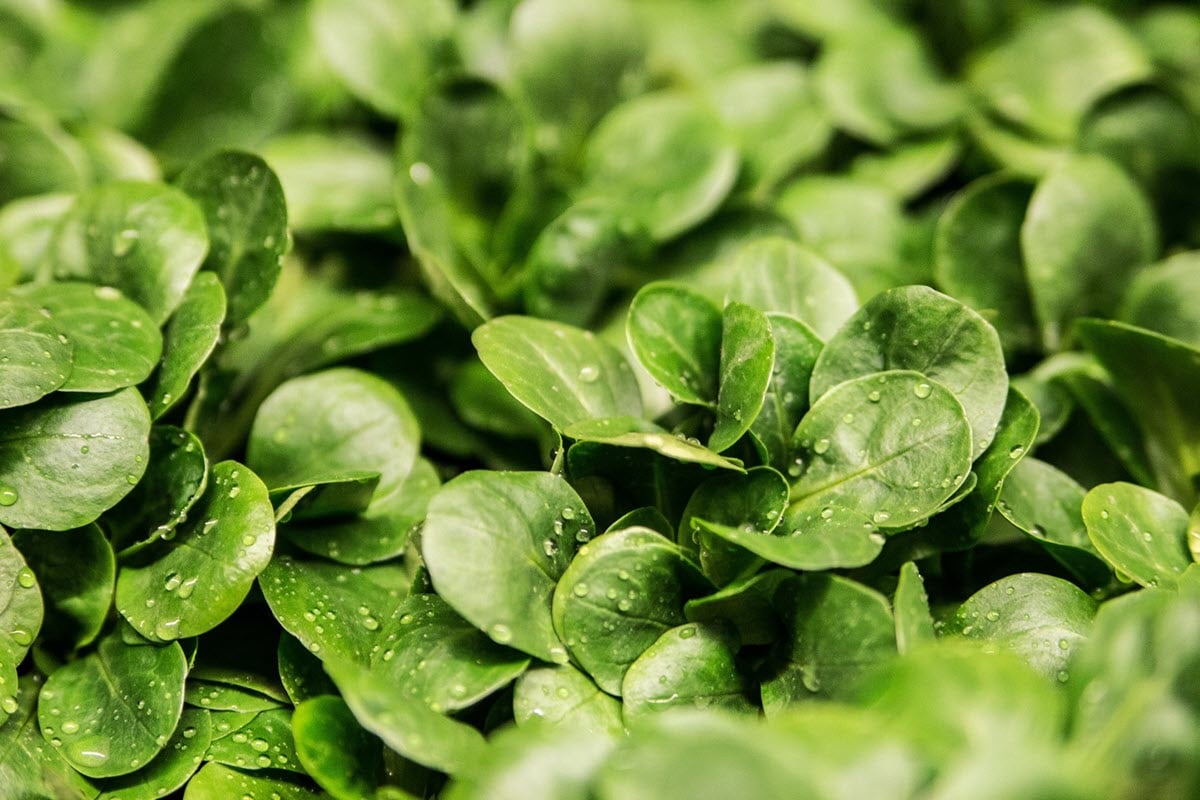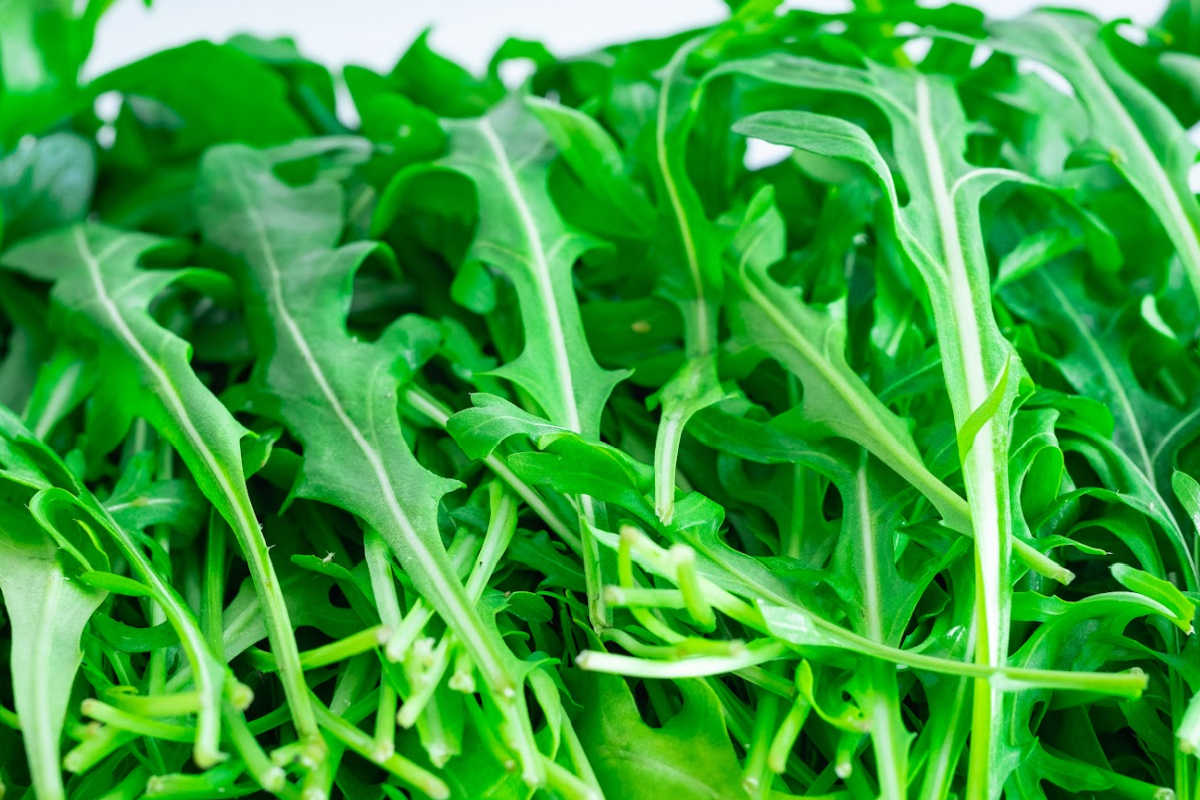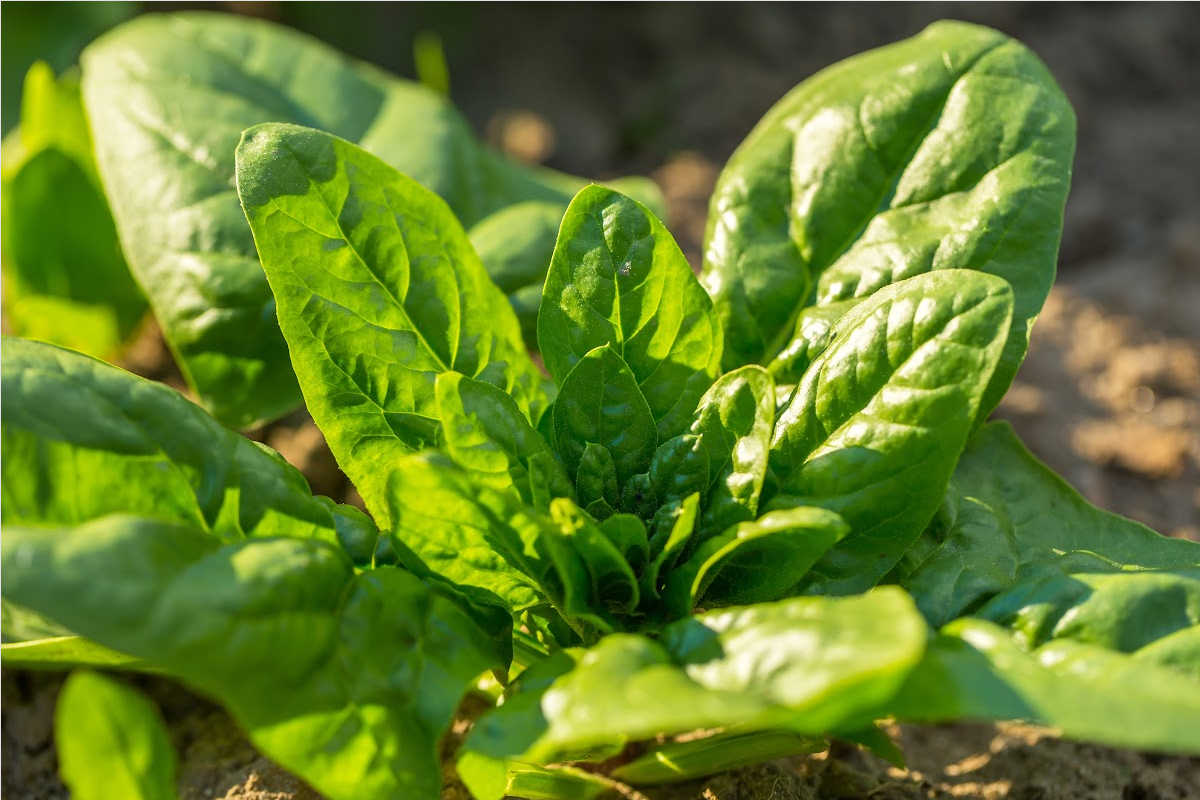Watercress may not be the first leafy vegetable that comes to mind when you think of greens. It is becoming more popular, so you might come by recipes that call for watercress. Regardless if you don’t enjoy it, or it’s not available in your area, there are plenty of watercress substitutes you can use for whatever dish you’re planning to cook!

This leafy vegetable has been considered as a cure for many illnesses and, as most of them are exaggerations, it still brings plenty of health benefits to the table.
What Is Watercress?

Watercress is a perennial herb that belongs to the Mustard family. As a result, its leaves have a spicy and peppery taste with a touch of spiciness.
This flavor profile comes from the plant’s defense system called the glucosinolate-myrosinase system.
The leaves are typically soft, with a smooth and rounded or oval shape. In its plant form, watercress grows beautiful and dainty white flowers, which are also edible.
You can find this plant in alkaline waters, and it’s available in most areas of North America. Its popularity today is because of its nutritional value.
Is Watercress Nutritious?
Watercress is an excellent source of different vitamins and minerals. Its highest vitamin content is vitamin A, followed by vitamins K and C.
On top of that, it’s also a great source of vitamin B6, calcium, and folates.
As a result, watercress is considered a superfood with tons of health benefits.
Cancer Management
Watercress is a cruciferous vegetable with high levels of phytochemicals, which help reduce certain cancer risks.
Moreover, the herb carries glucosinolates that form into isothiocyanates when broken down. The compounds in this chemical protect your cells against lung, skin, colon, and prostate cancer.
To a certain extent, activated isothiocyanates in watercress also help reduce breast cancer cells.
Healthy Bones
Because of the high percentage of vitamin K in watercress as well as traces of magnesium and potassium, it makes for a great diet to maintain healthy bones.
The vitamin K in watercress is actually so high that one cup exceeds the recommended dietary intake.
Immune System Improvement
Watercress also contains a good amount of vitamin C, which helps in boosting the immune system. Every cup provides 17 to 20 percent of a person’s recommended dietary intake.
Increasing vitamin C intake also boosts your body’s ability to produce white blood cells. These cells are responsible for fighting infections like the common cold.
Watercress Substitutes
If you’re looking to replace watercress in your dishes, look no further. Here’s an extensive list of options to suit every taste!
Arugula

Arugula is the top choice as a substitute for watercress. Not only does it have the same peppery kick, but it’s also readily available in most grocery stores.
Its elongated and ridged leaves also provide a great nutritional boost in anything you add it to —salad, pizza, or a stir-fry.
It added a fresh touch to our savory pumpkin pizza that made it even more irresistible!
Arugula loses most of its pungency when cooked, making it a perfect addition to soups or pasta sauces like pesto.
Beet Greens

There’s more to beets than the actual root. Beet greens are known for their crisp leaves and reddish stems. We love them in the Roasted Beets and Carrots.
They add a delightful crunch and a touch of sweetness to salads, and they make ideal partners for cheese.
Cabbage

You can turn to cabbage any time you can’t find any other watercress substitute. It’s always available and easy to cook with.
When raw, the leaves taste peppery and they turn sweet when cooked. Use these in soups, pickled dishes, and stir-fries to explore the different flavors they bring.
You can also use red cabbages as another alternative if you prefer a richer and earthier taste.
Chinese Cabbage

If you’re familiar with Korean cuisine, you’d also be familiar with Chinese cabbage. These leafy greens make the perfect kimchi.
Tasting the leaves alone, you may notice that this cabbage is sweeter than peppery.
Even so, they still work as a watercress alternative, especially when added to stir-fried recipes or soups.
Plus, they’re always available in most supermarkets, so it won’t be hard to find them.
Collard Greens

Collard greens belong to the cabbage family. They’re mainly known for having thick leaves with a bitter taste.
You may want to remove the stems of collard greens before use. They can be chewy and a pain to your jaw when eaten.
However, they can withstand longer periods of cooking time without wilting.
Get the best out of collard greens by braising them. You can also go the Mediterranean route and stuff them with a delicious rice filling.
Dandelion Greens

Dandelions aren’t just pretty flowers; they also have edible leaves that can act as a great watercress replacement.
These greens are readily available in markets, or you can forage them from your lawns.
This substitute tastes its best when the plant is still young. Mature leaves tend to have a more bitter and slightly spicy flavor.
You can use dandelion greens in raw and cooked dishes. When cooked, you’ll notice that they lose some of their bitterness. Try them in salads, sauces, frittatas, or quiche.
Early Yellow Rocket

Early yellow rocket, or upland cress, grows in dry soil. Although its name contains the word “cress” in it, upland cress actually comes from a different family than watercress.
The leaves offer the same flavor as watercress but a more intense peppery taste. Think of it as an arugula alternative.
Use early yellow rocket leaves in salads and sandwiches to retain that crisp bite.
Endive Leaves

Endive leaves add a beautiful crunchiness and bitterness to many dishes.
They come from the chicory family and resemble a shape like that of the Chinese cabbage.
Cooked endive leaves release a sweeter and nuttier flavor profile.
They make an exquisite addition to salads and appetizers like stuffed endive leaves.
Indian Cress

Indian cress also goes by the name of nasturtium leaves, which are edible parts of the nasturtium flower.
This leafy green is one of the closest substitutes you can use for watercress. It’s got the same fragrance, texture, and taste.
Both have a peppery kick and the right amount of pungency to give a dish a different dimension.
The best application for Indian cress is through salads and sauces.
One downside of this replacement is that it’s not always available, especially if it’s not in season.
You may purchase Indian cress at specialty grocery stores, or you can forage them. Otherwise, it’ll be hard to get a hold of one.
Kale

If you’ve been on the internet for a while, you’ll know that kale became a popular superfood a few years ago.
It’s the main ingredient in many smoothies, salads, and other healthy recipes —one of which is kale chips.
You can get kale in most supermarkets, which can come in other forms besides leaves. Although some may think it’s mostly bitter, kale offers a complex flavor to a dish.
Use kale as a pizza topping or salad ingredient, or incorporate it in a breakfast casserole to get the best flavors.
Of course, there are even more creative uses for kale, so feel free to add it even in soups and stews.
This beef and kale soup is healthy, nutritious, and ready in 30 minutes making it a wonderful weekday meal!

Iceberg Lettuce
Lettuce is readily available in many grocery stores; it’s basically the go-to for salads and sandwiches.
Because of its crunchy bite and mild taste, lettuce works wonderfully in raw dishes such as salads and sandwiches.
It can also be used in soups, grilled, sauteed, and braised.
An increasingly popular use is lettuce wraps, which means you’re basically replacing bread with lettuce. This is a super easy way to cut down on carbs and lighten up your meals!
Purslane

Another perfect substitute for watercress that you may find in your garden is purslane. It offers a slight tang with a touch of saltiness and bitterness. Purslane is also comparable to arugula because of this flavor profile.
Fresh purslane tastes sharper, while cooked purslane will have a mellower taste. Use it in salads or add it to soups or stir-fries.
Radicchio Leaves

Like endive leaves, radicchio leaves also come from the chicory group. Because of their distinct dark red shade, they’re great for adding a touch of color to your salad.
Radicchio leaves have a certain spiciness and bitterness. Their unique taste can be overpowering for some, but they definitely add great flavor.
Aside from using them in salads, you can also saute radicchio leaves or add them to your favorite pasta for a nice texture and flavor boost.
Radish Sprouts

Belonging to the same genus as watercress, radish sprouts are a close contender to replace watercress.
Not only do they look alike, but they also taste the same. A pair of untrained eyes may not even notice the difference if you put them in a dish.
Radish sprouts deliver a pungent and bitter taste to salads and sandwiches. Although they can be hard to find, you can always grow your own.
Spinach

Spinach is one of the easiest greens you can find in grocery stores. Not only that, but it’s also available all year round.
If you prefer a milder taste, go with spinach. It’s not as bitter or pungent as watercress.
However, you can add several sprinkles of ground black pepper to recreate that peppery kick.
You can use spinach as a replacement for watercress in both raw and cooked recipes.
We’re very enthusiastic when we get to enjoy it in baked dishes like spinach tomato quiche, spinach alfredo pizza, or this yummy spinach and ricotta slab pie.
Water Spinach

Contrary to its name, water spinach isn’t a variation of spinach. It’s common in tropical countries and used in many Asian dishes. It grows easily near natural water bodies like streams, rivers, and lakes.
Water spinach tastes better when incorporated into dishes instead of eating it raw.
One excellent way to cook this is by steaming. You can also sautee it with garlic for an extra kick of savoriness.
The Takeaway
Watercress is a nutritious vegetable that brings a bright and fresh flavor to many dishes. It’s known for its peppery, sharp, and slightly spicy taste.
If you prefer a mellower taste, opt for greens like Chinese cabbage, spinach, and purslane.
Those searching for a closer watercress substitute with similarly bitter leaves should consider arugula, Indian cress, and radicchio leaves. Either way, a wide variety of options can replace watercress.
Now that you know what you can use as a watercress substitute, try them out to see what works best for you!
Hi!
Ginny Collins is a passionate foodie and recipe creator of Savor and Savvy and Kitchenlaughter. Indoors she focuses on easy, quick recipes for busy families and kitchen basics. Outdoors, she focuses on backyard grilling and smoking to bring family and friends together. She is a lifelong learner who is always taking cooking classes on her travels overseas and stateside. Her work has been featured on MSN, Parade, Fox News, Yahoo, Cosmopolitan, Elle, and many local news outlets. She lives in Florida where you will find her outside on the water in her kayak, riding her bike on trails, and planning her next overseas adventure.








Leave a Reply